Timeline of a Hancock Park yard makeover: ‘I didn’t want an English garden, but...’
- Share via
After Linda Sanoff let her lawn die off and removed it, she knew that she wanted to replace it with a drought-tolerant alternative that would complement her Mediterranean home in Hancock Park.
“We wanted something traditional,” Sanoff said. “I didn’t want an English garden, but I did want something a little formal.”
So Sanoff and her husband, Gerry, asked landscape designer Michael Kirchmann Jr. of Anigo Garden Design to help them convert their former front lawn into a lush low-water oasis that requires very little maintenance.
“The transformation was all about water,” Sanoff said. “It’s a precious resource. We would have done this even without the rebate because it was the right thing to do.”
The couple began by replacing the turf on their parking strip with the South African ground cover dymondia margaretae. When the Los Angeles Department of Water and Power began offering turf removal rebates, it gave them extra motivation to keep going.
To help them visualize the new garden, Kirchmann took a picture of the house and covered it with a sheet of paper. On it, he drew in all of the plants so the couple could visualize their new garden.
To their delight, it grew in just as he illustrated.
Kirchmann kept the agapanthus, trumpet vine and roses because they were well established and planted drought-tolerant shrubs, perennials and succulents — lavender, rock roses, lantana and iris among them.
He also added a decomposed granite walkway to allow access for the trash cans and installed a drip irrigation system. A detailed maintenance list, included below, makes maintenance easy.
Sanoff says she is pleased with the results and the that they are saving 20% savings on their water consumption.
Now when neighbors walk by and comment on their landscape, she offers them encouragement. “I tell them ‘you can do this too,’” she said.
The couple removed the parkway in February 2015, stopped watering the front lawn in June and planted the new yard in November. They received a turf rebate of $3,500 and invested $9,000 more.
See how the front yard evolved over time and what it looks like today:
September 2014
The front yard before
The original front yard was simple, consisting of turf, agapanthus and roses.

September 2014
The parkway before
The Sanoffs started their turf removal process with the parking strip. After their gardener dug up the long, narrow strip of grass, they planted Dymondia margaretae.
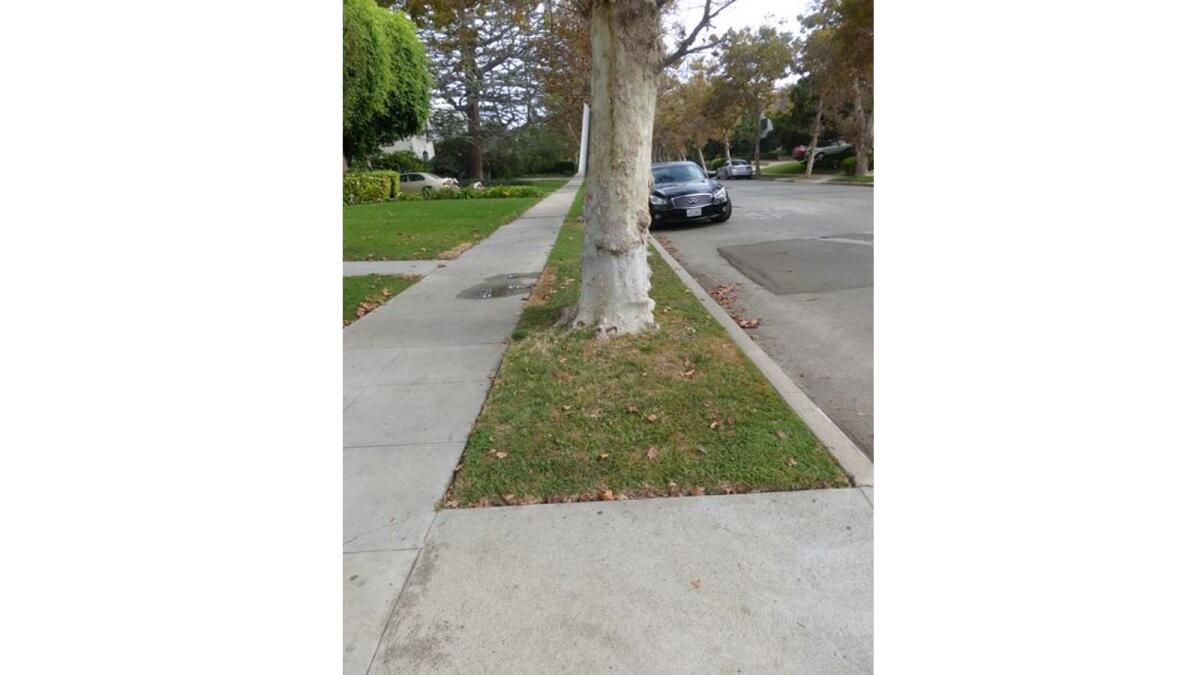
February 2015
The parkway in transition
The South African ground cover Dymondia margaretae (silver carpet) begins to fill in on the parking strip.
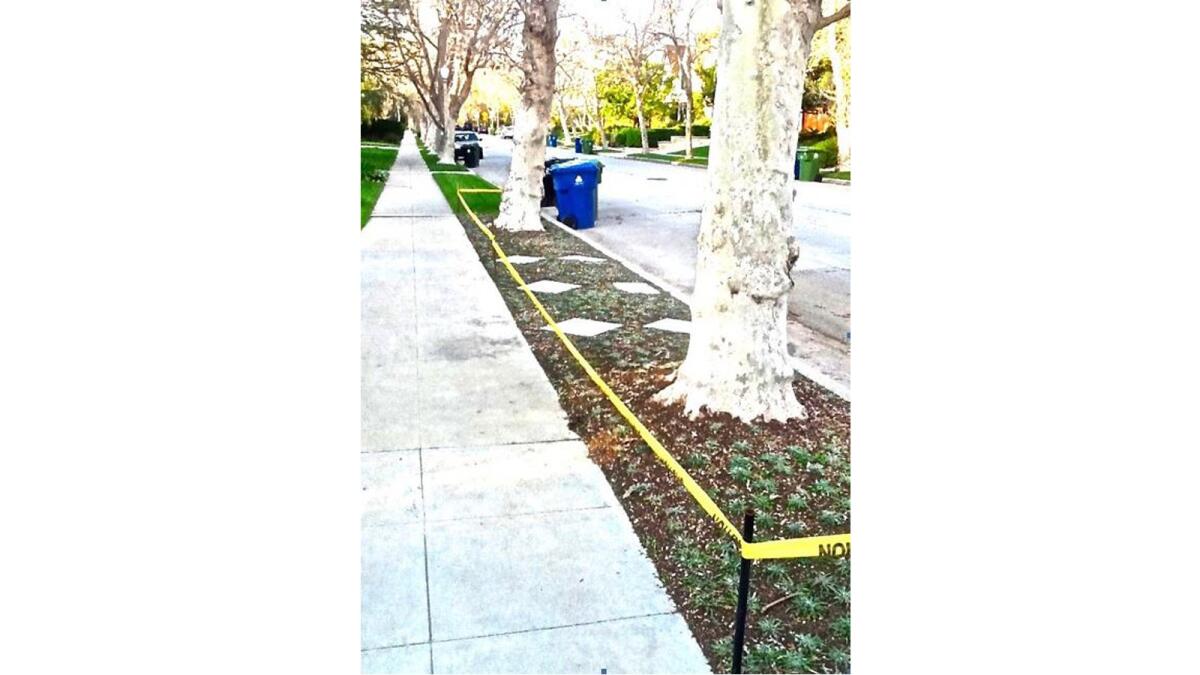
June 2015
The front lawn before
The 1926 Mediterranean home was bound by a traditional — and thirsty — lawn. The Sanoffs stopped watering the lawn and let it die over four months. They skipped weed killer and had their gardener dig up the dead lawn, along with 6 inches of soil before installing the new plants.
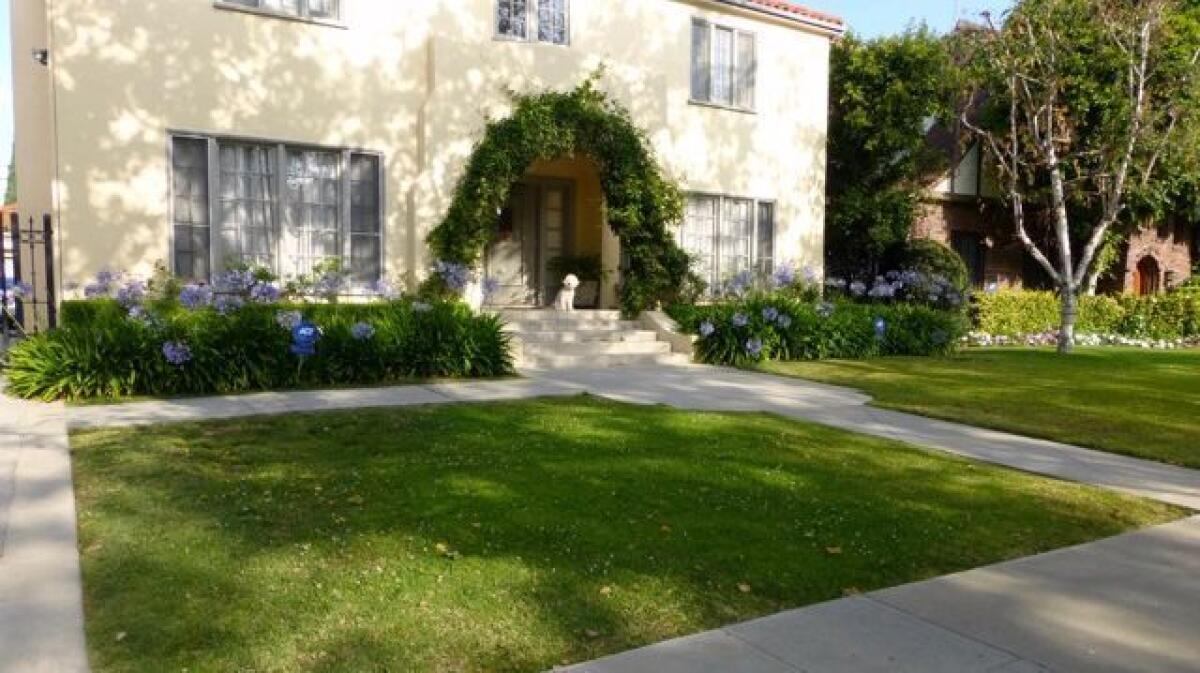
November 2015
Newly planted ...
Among the new items: rock roses, Echeveria elegans, tall Euphorbia wulfenii, pyramid-shaped juniper “Medora,” white trailing lantana, English lavender and walking Iris.
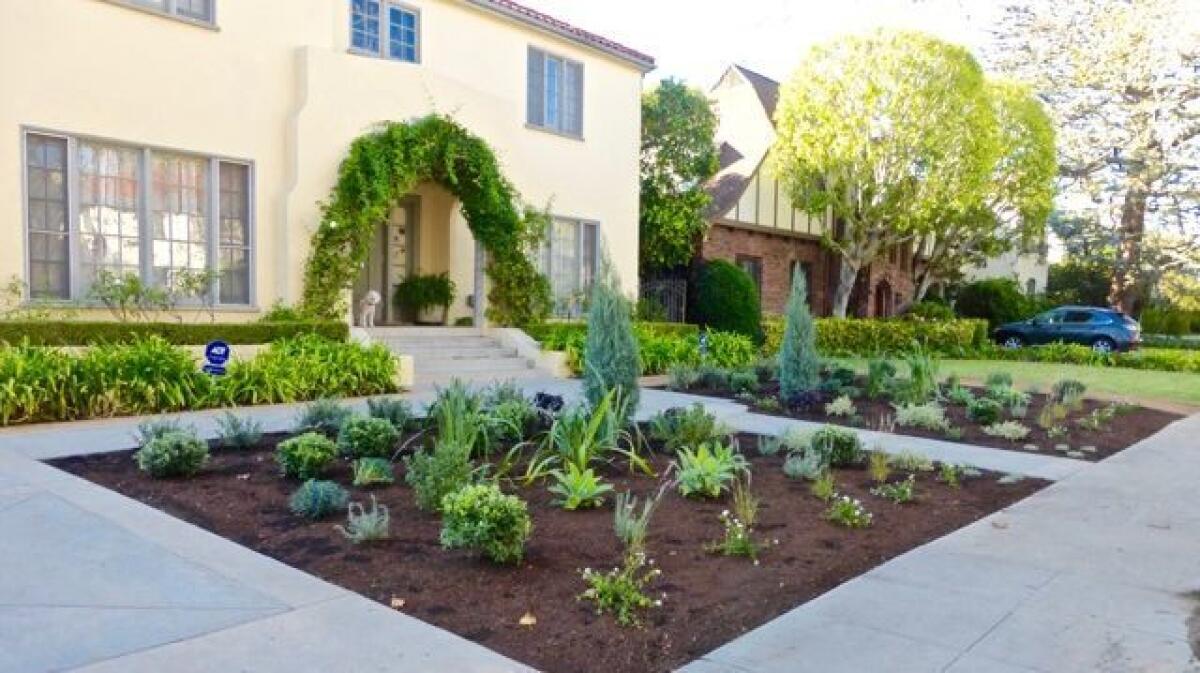

June 2016
Growing in, seven months later
The garden is looking lush seven months later.
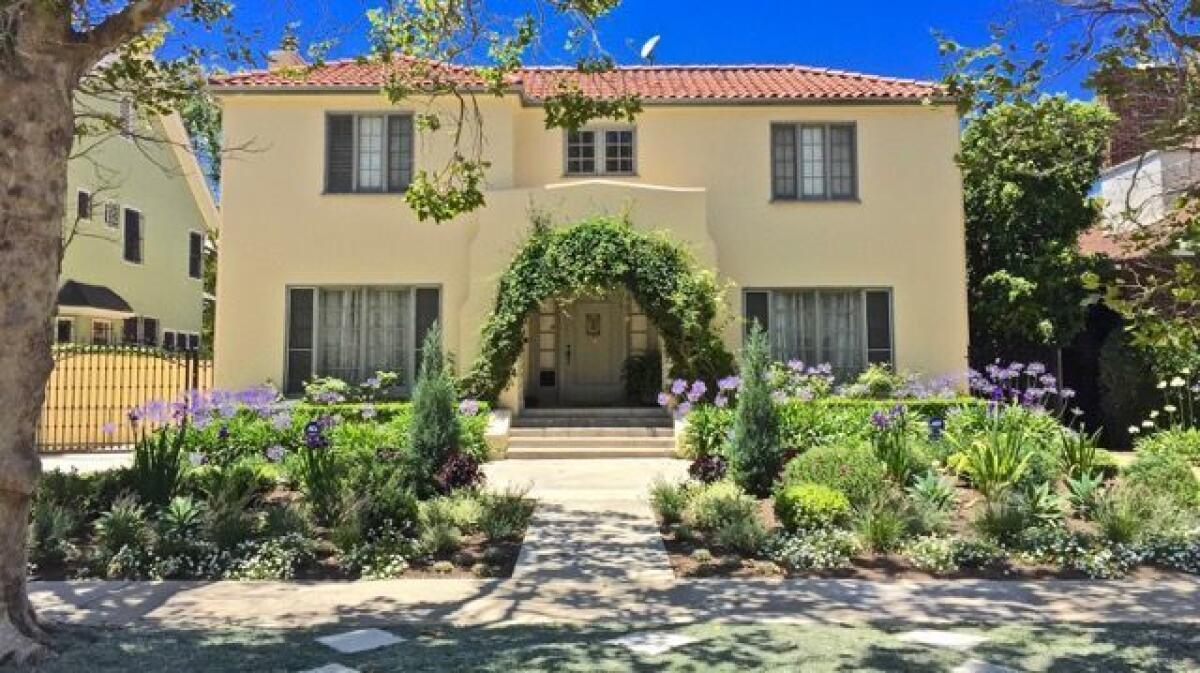
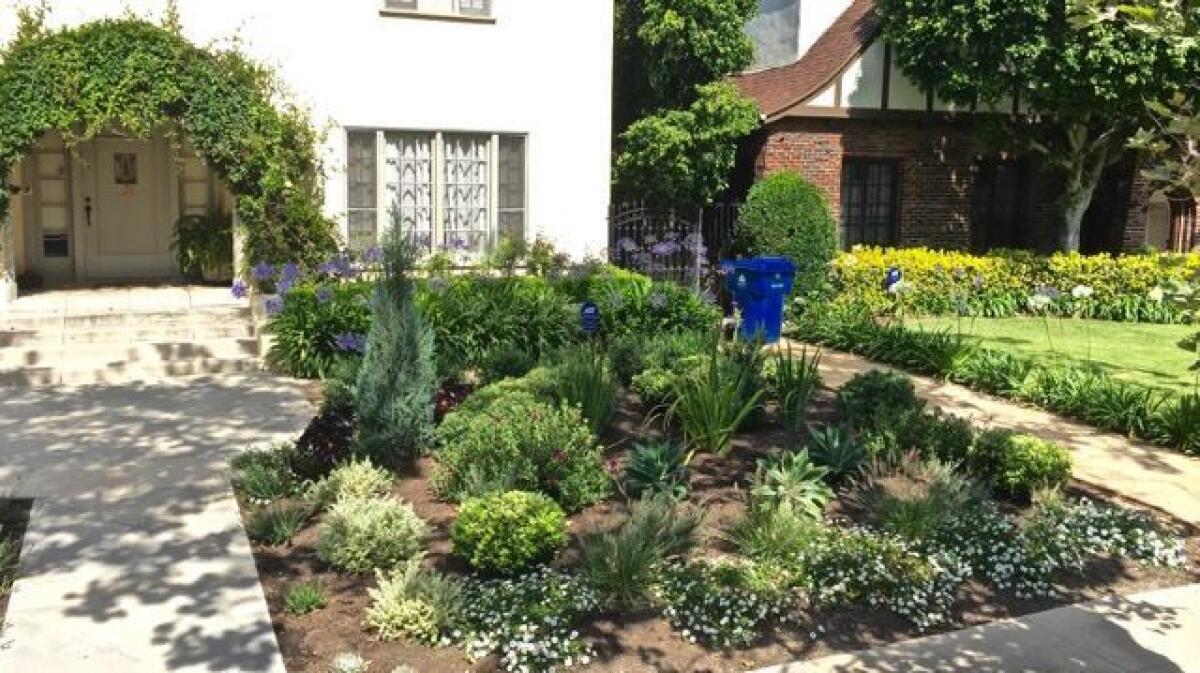
Drought-tolerant plants that will look great in your garden! »
April 2017
The front yard in the spring
Following record winter rain in Southern California, the garden is alive with a variety of blooms, shapes and textures.
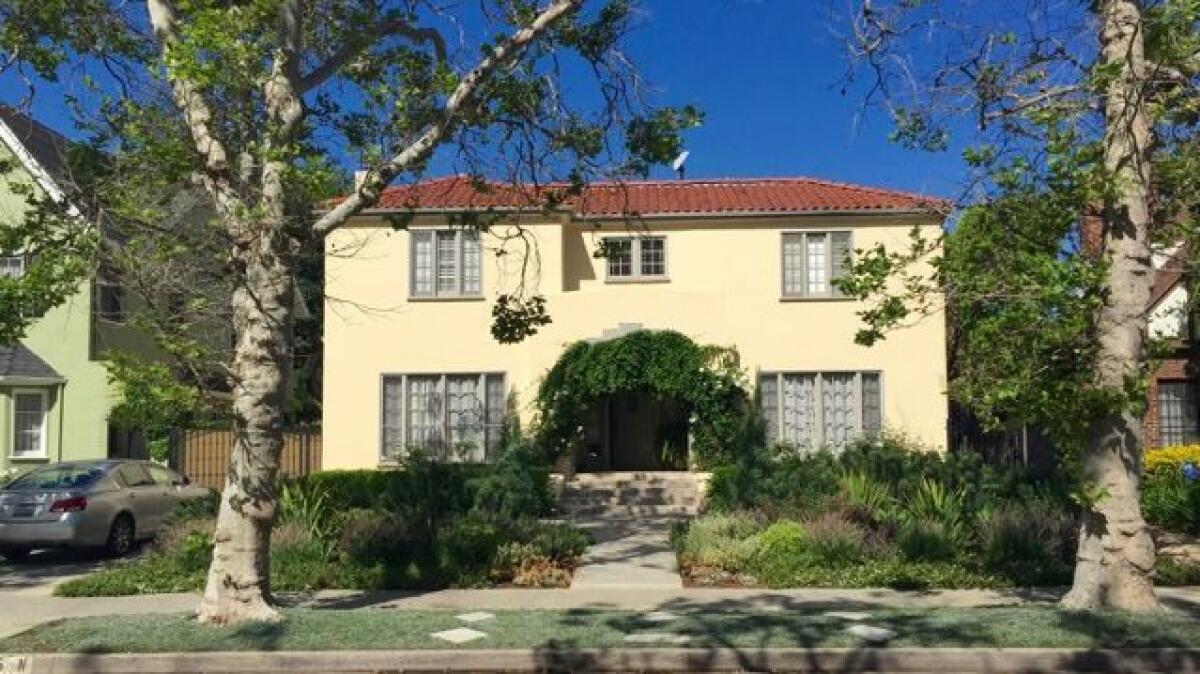
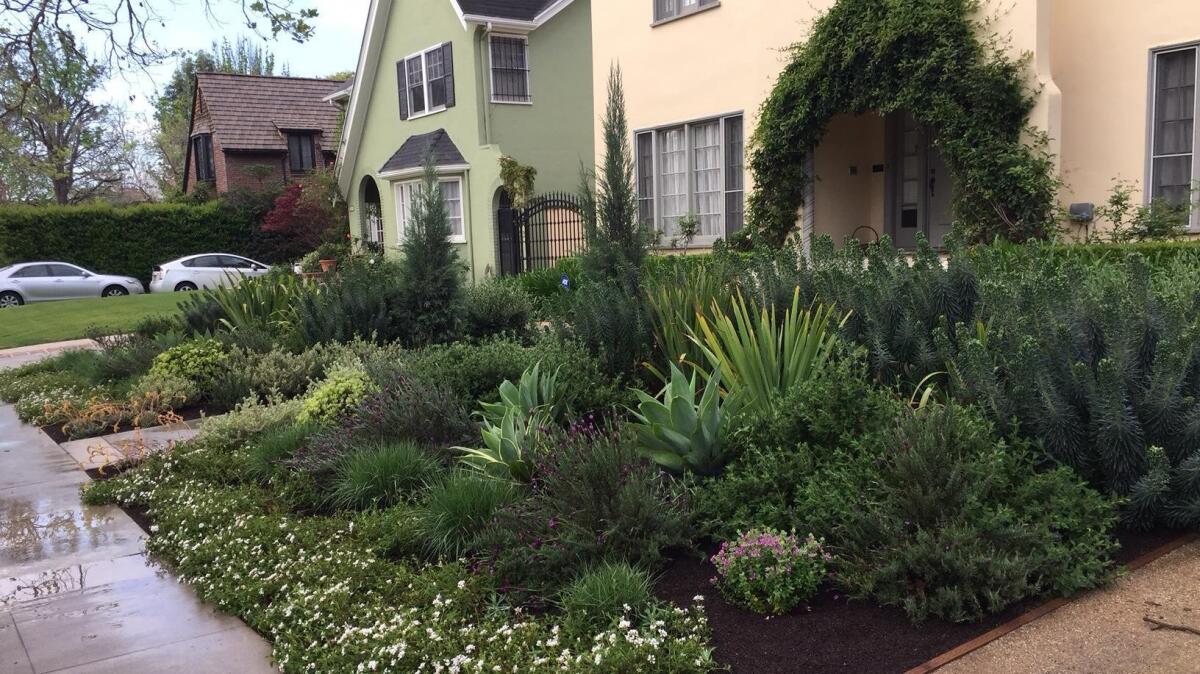
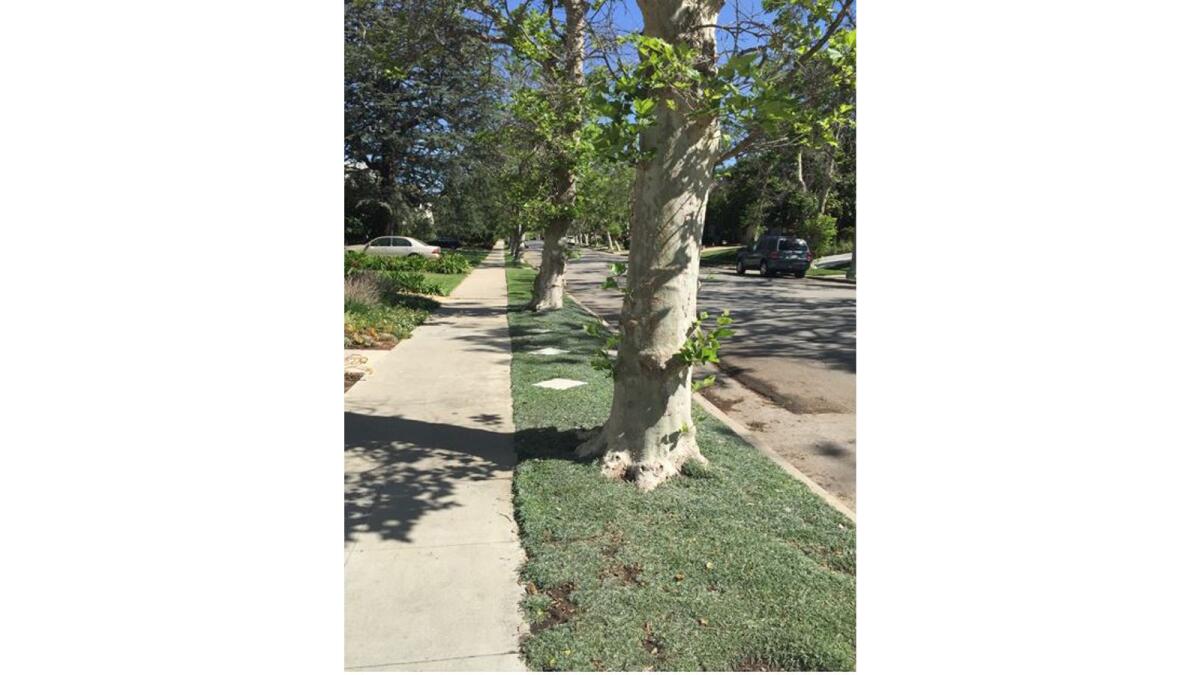
May 2017
The front yard today
The former front lawn and parking strip today, after Sanoff trimmed the Euphorbia wulfenii per Kirchmann’s maintenance plan, shown below.
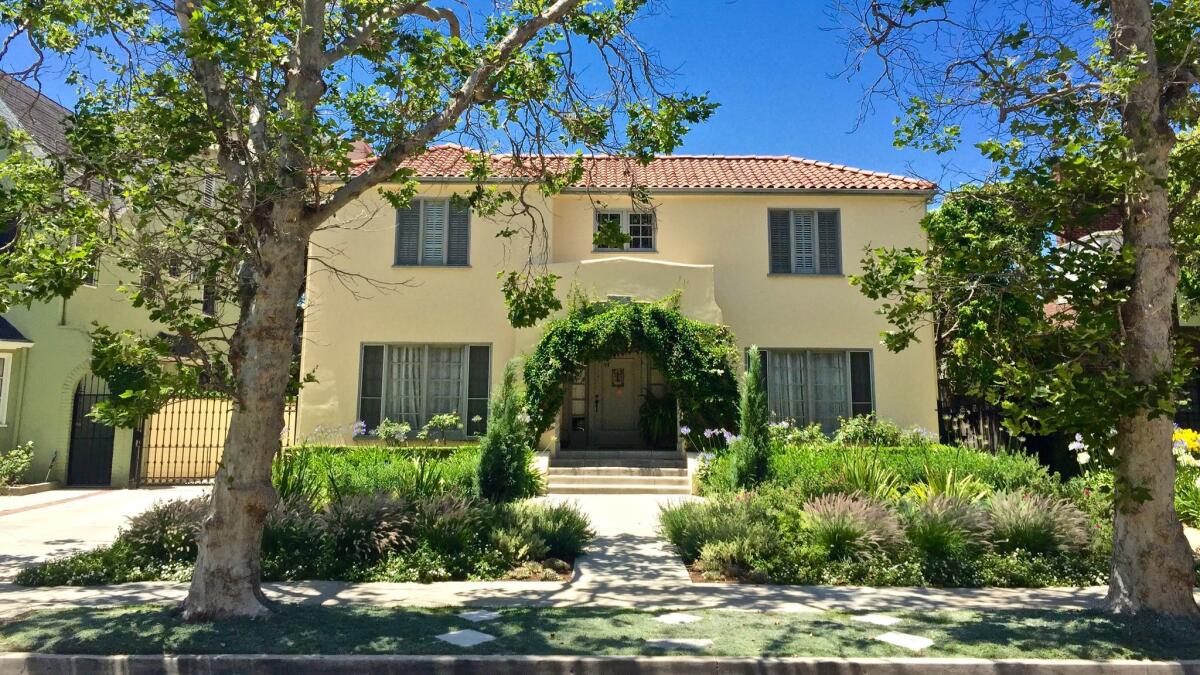
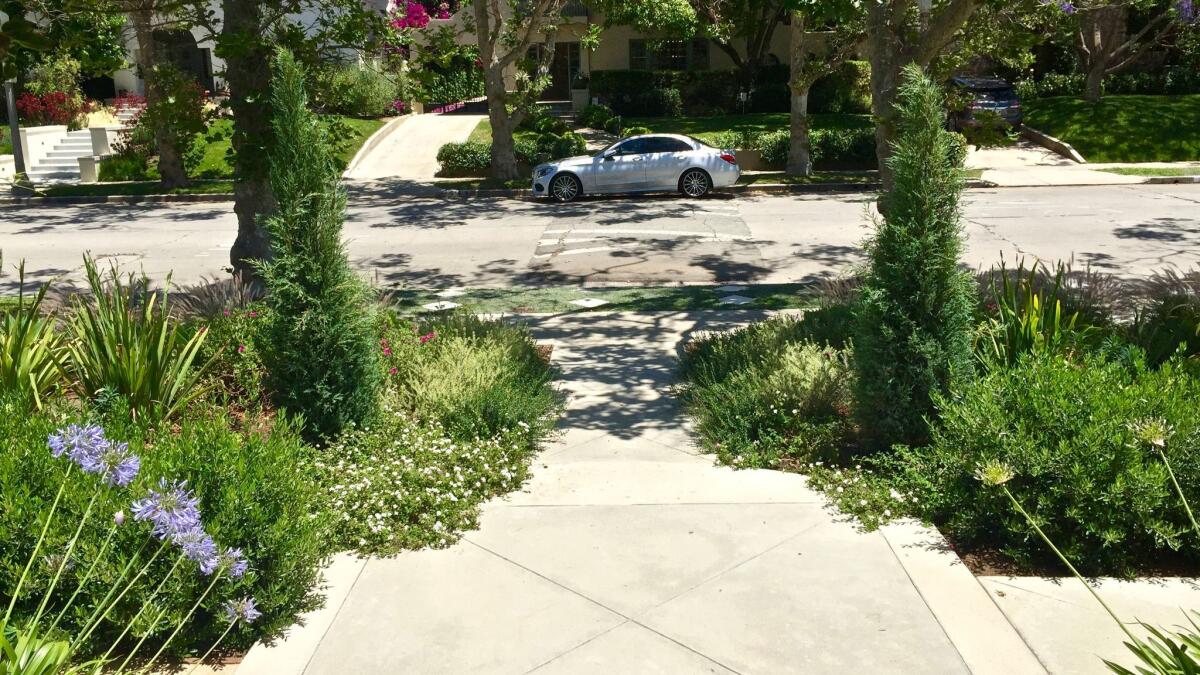
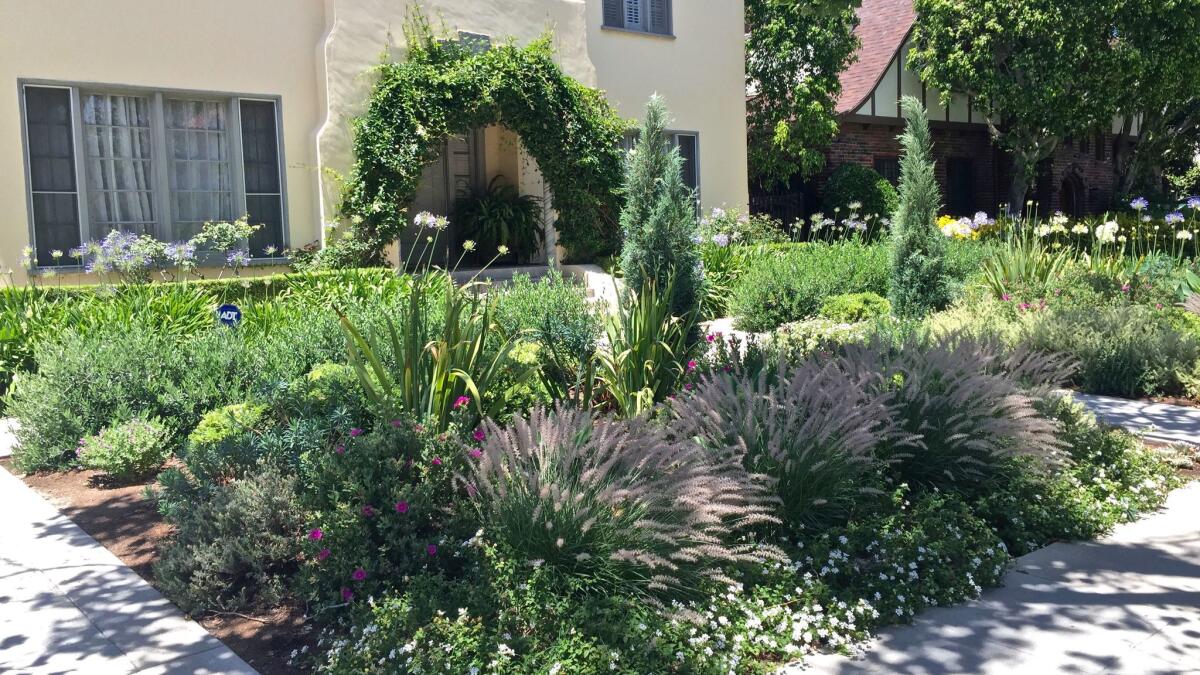
Inspiration -- and tips -- for drought gardening »
Plant list and maintenance tips from Michael Kirchmann Jr.:
Aeonium ‘Zwartkop’: Remove dead leaves underneath as they brown. If the plant gets too tall, cut stalk, let stalk get hard at the end after about one week, put plant back in ground.
Agave attenuata ‘Ray of Light’: Remove dead leaves underneath the main clump. Remove any pups from the stalk. Each agave should be a stand-alone specimen.
Cistus ‘Sunset’: Cut back and shape as needed. Do not let plant get rangy.
Echeveria elegans: Cut back bloom stalks when finished. Remove dead leaves underneath as they brown.
Euphorbia wulfenii: Cut back bloom stalks as close to the clump as possible. Usually in late spring/early summer.
Juniper ‘Medora’: Trim and shape as needed to keep the pyramid shape.
Lantana ‘Trailing White’: Cut back by one-third after the bloom cycle. The plant should have a trailing look, but not get too rangy.
Lavandula stoechas: Cut back by one-third after each bloom cycle to keep the plant full. Trim back to a roundish shape, but not a tight ball shape.
Neomarica caerulea ‘Walking Iris’: Cut out bloom stalks after the flower is finished. Remove any yellow or dead leaves.
Olea ‘Little Ollie’: Trim and shape the dwarf olive as needed, cut to desired height.
Pennisetum orientale Chinese Fountain Grass: Cut back entire plant to about two inches or so above the main clump in winter to refresh the plant.
Pittosporum crassifolium 'Compactum': Cut back as needed to shape for desired height and fullness.
Teucrium chamaedrys: Cut back bloom stalks after they finish flowering. Cut back as needed to shape for desired height and fullness.
Westringia fruticosa 'Morning Light': Cut back as needed to shape for desired height and fullness.
If you’ve given your yard a makeover, we want to see it, and may feature it in an upcoming edition of the Saturday section. Please send before and after pictures to home@latimes.com, and include a day-time contact number.
Twitter: @lisaboone19
For an easy way to follow the L.A. scene, bookmark L.A. at Home and join us on our Facebook page for home design, Twitter and Pinterest.
ALSO:
They turned the front lawn into a welcoming extension of their Woodland Hills home
They replaced the lawn with a gorgeous drought-tolerant meadow that doesn’t need mowing
A lush English garden in Studio City is converted to a water savvy landscape
Before and after: A Tustin garden goes from thirsty lawn to drought-tolerant oasis
